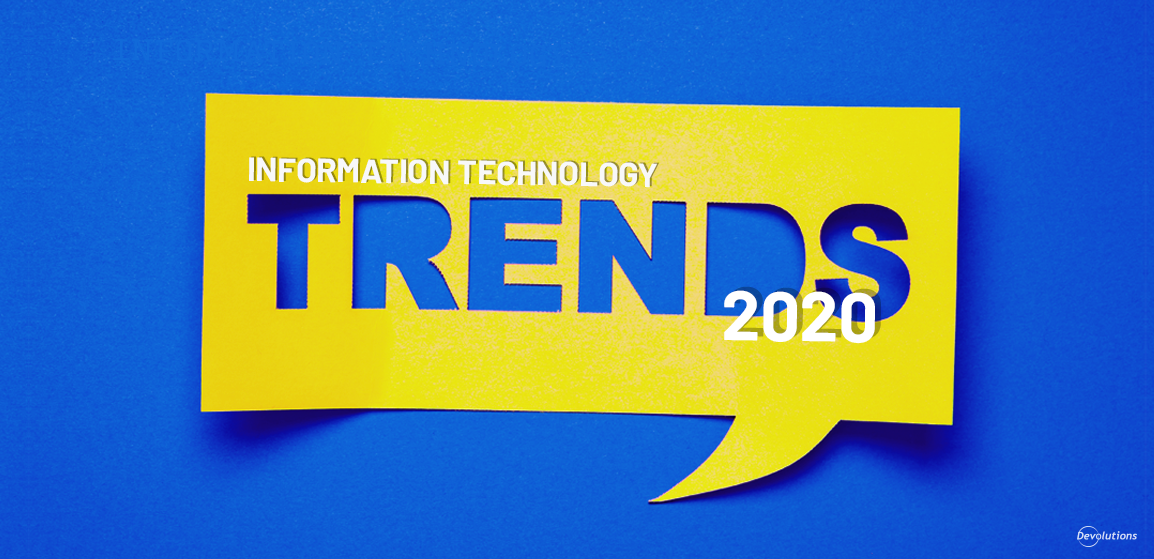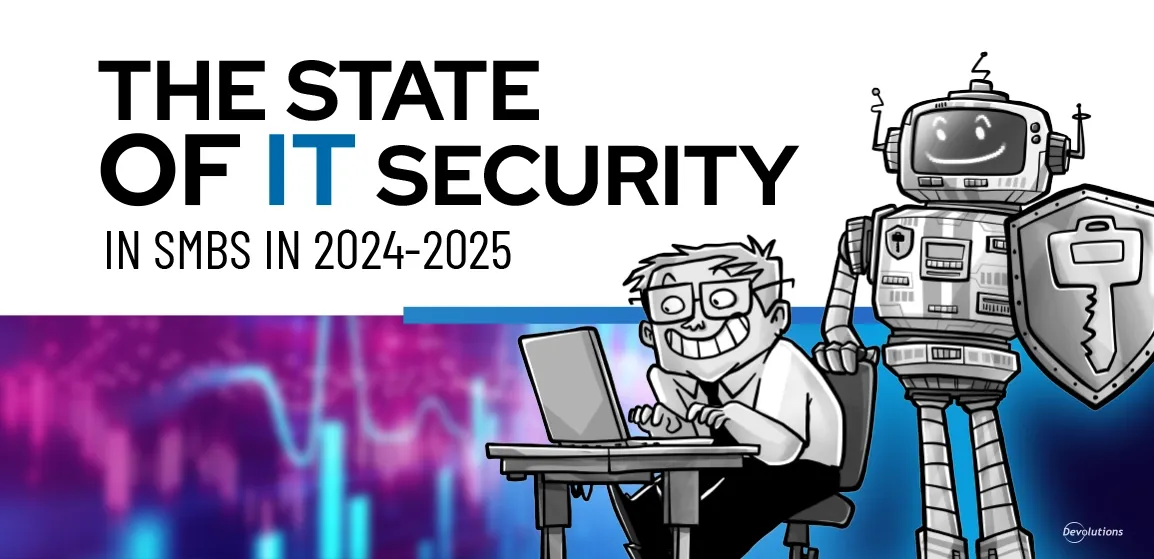In the past half-decade or so, technology has been advancing at a very rapid pace. As a result, predicting the yearly trends in information technology is extremely difficult, and it’s definitely possible for a prediction to go out of date as soon as a blog post is published.
On the other hand, understanding the potential changes and ongoing trends is arguably one of the most important factors to achieving success in the tech industry. Technology-based careers are also evolving rapidly, and the role that may be in demand today might significantly change – or be eliminated completely – within the space of a single year.
Therefore, staying on top of current technology trends and remaining up to date with the most sought-after skills are vitally important. Here is our prediction for the top seven trends in information technology in 2020.
1. Artificial Intelligence
Let’s start with the obvious: Artificial Intelligence, or AI.
AI has been the buzzword for the past couple of years or so, so it’s fairly obvious that AI will remain an ongoing trend in 2020. The question is: in what manner?
AI in 2018 and 2019 was mainly about the technological ‘revolution’ of machine learning (and deep learning). In 2020, AI machine learning developments will continue with advances anticipated in the following areas:
- Less data hungry
Data-related issues have been the major obstacles in AI implementation and big data. Deep learning AI can only work accurately after it’s been exposed to massive amounts of data, whereby the data will train and validate the AI.
Obviously, finding sufficient amounts of the right kinds of data can be a huge challenge, and various data synthesis methods are now being developed to tackle this challenge.
In 2020, we can expect to see major developments in synthesizing our own training data, especially with the advancements in GAN (Generative Adversarial Networks).
- Improved neural networks
Deep learning (as opposed to machine learning) relies on Artificial Neural Networks (ANN) to perform deeper, faster, and more accurate data learning. Deepfake technology is one of the more popular implementations of neural networks.
In 2020 and beyond, we can expect to see the continued growth of neural network technologies and architectures – in terms of size, speed, and depth – to better emulate human performance in data analysis.
- AI for AI
AI development is arduous and time-consuming, and various approaches have been advanced to help automate AI processes and development.
As it stands today, AI can enable automated AI development. For example, MIT-IBM is currently developing the Neurosymbolic Concept Learner, a hybrid AI that attempts to solve AI challenges like explainability and data size requirements.
While the examples cited here of AI becoming less data hungry, improving neural networks, and further automating AI development are obviously non-exhaustive, and more trends in the field of AI will emerge in 2020 and beyond, there is little question that AI is poised for a breakthrough year.
2. Advanced Automation
Automation has been one of the most talked-about topics for the past few years, but the idea of advanced automation – or hyper-automation – is now being studied and implemented at a rapid rate.
Advanced automation is mainly made possible by multiple machine learning and deep learning implementations in the form of packaged automation software. The main idea of hyper-automation is to automate all possible processes. It happened first in the sector business, but later on with things like household chores and personal activities.
RPA (Robotic Process Automation) is a system that connects and automates older technologies without APIs; it is the key component in advanced automation, and RPA as a field is expected to evolve and expand in the coming years.
Hyper-automation will allow people and businesses to better understand how different processes and functions interact with each other in generating value, providing real-time insights, while at the same time allowing us to pursue other opportunities.
3. Mainstream Blockchain
Blockchain as a term rose to popularity as the technology behind Bitcoin and Cryptocurrency, especially with the Bitcoin craze back in 2017.
Despite the growing use and importance of blockchain, few people actually understand the concept and idea behind it. Blockchain is, however, widely regarded as the potential solution to the biggest issue the internet has always faced: trust.
Blockchain is essentially a ledger – a record of transactions – that is distributed to every participant in a network. These transactions are signed cryptographically, available for review by all participants, and irrevocable.
To put it simply, blockchain allows everyone to trace an asset back to its origin, while everyone in the network can maintain privacy if they choose. This opens the door for a multitude of potential implementations, including:
- Decentralized database to better connect users with third-party suppliers, as implemented by Spotify.
- Allowing consumers to easily trace the origin of the products they purchase.
- Allowing two parties (who don’t know and trust each other) to safely interact and commit transactions without needing a centralized authority.
In 2018 and 2019, the popularity of blockchain slowed down, but a lot of people and companies are working silently behind the scenes to tinker with the technology.
It’s quite possible that 2020 will be the year where blockchain gains mainstream popularity with a practical, widespread application(s). If it happens, this will also signal the realization of the democratization of technology.
4. The Race for Quantum Supremacy
Google shook the world last October when they announced the completion of the very first functional quantum computer.
Many industry experts believe that quantum computing – and the practical implementation of quantum mechanics in general – will be the next breakthrough to once again change the world as we know it (the latest being thermonuclear invention).
While Google’s quantum computer can only perform a single calculation at the moment, it is a highly complex and massive calculation. According to Google, today’s most advanced non-quantum computer will take more than 10,000 years to perform this calculation, while Google’s quantum supercomputer can do it in just 3 minutes.
This first milestone achieved by Google might just be the tipping point, allowing more innovations and advancements in 2020 as more players enter the race for quantum supremacy.
5. More Implementations for Edge Computing
Edge computing has also been a major buzzword for the past couple of years or so, with the common misconception that it will soon replace the hegemony of cloud computing.
In a nutshell, edge computing is a computing approach where data collection, analytics, and processing are placed closer to the data source, as opposed to cloud computing where the information source is often placed very far away from the cloud server.
As a result of the closer proximity, edge computing can reduce latency, improving the speed of data collection and analytics. With the expected rise of the practical Internet of Things (IoT) in 2020, empowered edge implementations will play a significant role in making this a reality.
It is expected that by 2023, there could be 2,000% more active smart devices in daily use than there are today, with edge computing and the edge network at the core.
6. 5G Connectivity and Wi-Fi 6
2020 will be the year that 5G speed is launched into the mainstream.
Verizon, for example, is confident that half of the US will have 5G access in 2020. Many of the latest flagship smartphones, and even some mid-range ones, are already compatible with 5G connectivity.
Coupled with the launch of Wi-Fi 6, which also happened in 2019, 5G connectivity will mean significantly faster internet and data processing in 2020 and beyond.
Of course, faster internet means more than faster video streaming and browsing activities, as it will also provide us with new technological implementations, such as automated vehicles, IoT applications, hyper-automated manufacturing, and much more.
Today, each Wi-Fi network is connected with around 10 devices, but this number is expected to increase by 500% (to 50 devices) by 2025. Wi-Fi 6 will enable this while maintaining data quality and security.
7. Security and Transparency
Data security has been one of the major concerns in the digital world for the past few years. We have seen the introduction of GDPR in Europe, and more recently, we have seen the implementation of CCPA (California Consumer Privacy Act).
We can expect further regulations to be implemented in more US states and other countries, and these regulations will inherently affect how we use the internet and social media. For businesses, new regulations will also affect our digital marketing activities.
Faster internet speed due to 5G connectivity, as discussed above, will also mean increased risk of data breaches and security threats. As a result, there’s a trust crisis in the digital world: consumers are now more aware of how our data is being used, especially in the aftermath of various data privacy scandals in 2019.
Data security and transparency about how businesses use consumers’ data will continue to be huge concerns in 2020. We’ll probably see more online security scandals and incidents in 2020, but on the other hand, the data security field is expected to grow immensely in the years to come.
Conclusion
Technologies are rapidly evolving and new technologies are emerging with each passing day. These seven trends we have discussed might not be the only ones to emerge in 2020, but they are some of the safest bets.
Various evolving technologies like advanced hyper-automation and the rise of 5G speed might provide transformational opportunities in various businesses, but data privacy and security will continue to be the major concerns. Speed and adaptability will be the keys to success in digital technology in 2020 and beyond.




